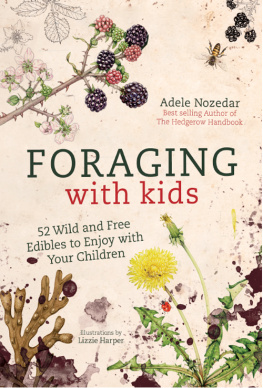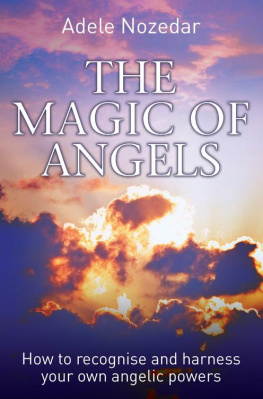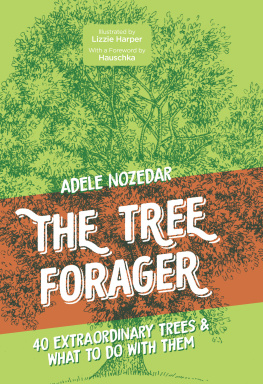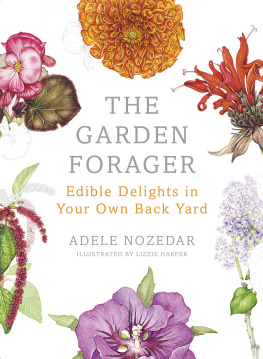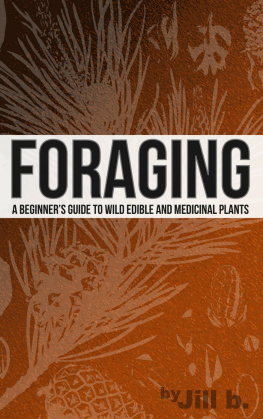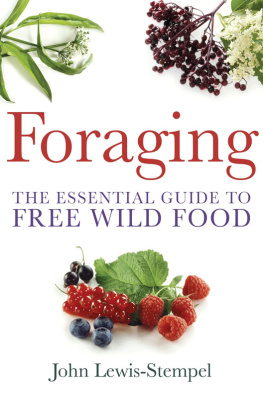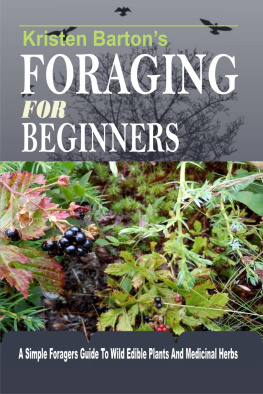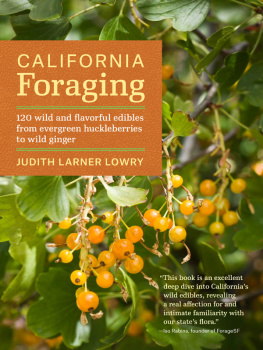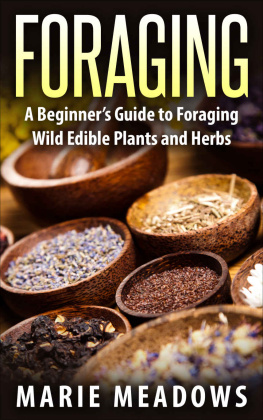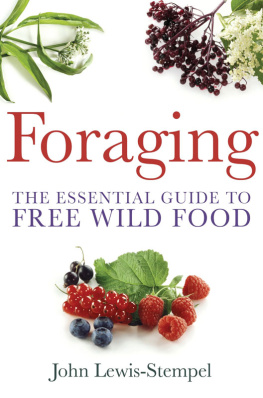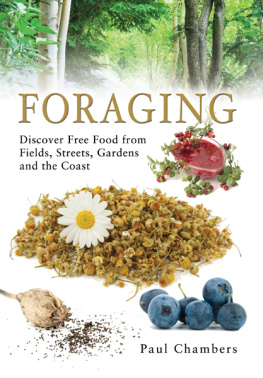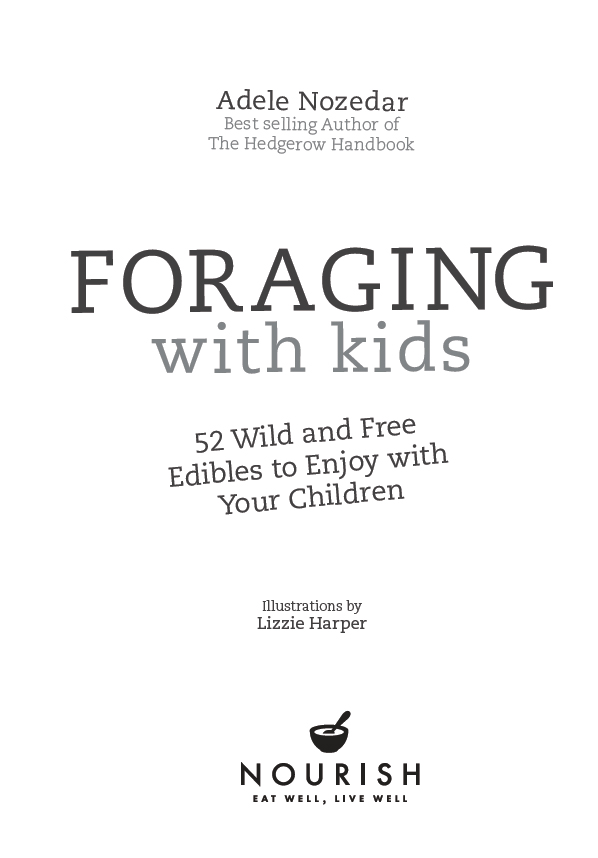CONTENTS
From Adele
Thanks to Dianne Davies, who was my teacher at primary school; we are still friends. Her wisdom, kindness, imagination and wicked sense of humour are utterly inspiring. I hope that everyone knows at least one teacher like her.
From Lizzie
Id like to dedicate this book to my wonderful sister, Emily Harper, who is supportive and wise, and knows more about children and how to keep them engaged, informed, and occupied than anyone else I know.
Dear Foragers...
Im hoping that many of the people reading this are children (yes that means you!), or you may be a parent, guardian, uncle, aunt, grandparent, or possibly a teacher.
Whoever you are, no matter your age, or where you live, what kind of job you have or what kind of school you go to, whether youre tall or short, rich or poor you all have one thing in common
YOU ARE ALL FORAGERS! Do I need to convince you? Okay, Ill explain exactly what a forager is, at least as far as this book is concerned. Ready?
Nearly everyone has at one time in their life picked a berry or a leaf from a plant growing in the wild and eaten it. Thats foraging. To forage is to gather food in the wild (primarily plants, but also fungi) to eat, or use for medicine. This food can include leaves, flowers, fruit and berries, seeds, nuts, shoots and roots. Foraging doesnt concern itself with meat, although some foragers do regard certain shellfish and crustaceans as part of their harvest.
Its a vast subject. To simplify things for this book, Ive decided to include only the plants that you are likely to see often, but maybe havent paid much attention to before now. Lots of the plants will be ones that grow in your garden (even if they were never intended to be there). Some of the plants youll know the names of, such as Nettles; others you wont, even if you see them every day. My editor Dan, for instance, was amazed to discover that the stickyweed that he used to chase his sister around with is also called Cleavers.
Foraging has become quite popular again and is something that many people do as a hobby, but it really wasnt THAT long ago that people had to gather wild plants in order to survive. These people would not have made long journeys to find rare and exotic plants; the most useful plants, and therefore the most valuable, would have been and still are the common ones that are plentiful and easy to find, right from home.
Lets try something: think of seven wild plants that you know, that you might guess to be edible (edible means you safely can eat them). They can be leafy plants; or ones with berries; they might be flowers; they could even be trees, some of which have nuts and blossoms. Write them down somewhere just on a scrap of paper or whatever you have to hand.
Im going to try to predict what might be on your list so dont turn the page until youve finished selecting your seven plants.
Okay, lets see if I can guess some of the plants youve written down
Nettles
Dandelions
Blackberries (or brambles)
Sloes
Wild Garlic
Rose Hips
Hazelnuts
Did I guess right? Even if none of these plants are the ones that you thought of, it doesnt matter if you have written down the names of seven wild plants or their fruits, it shows that you know something!
And we know why that is
Its because youre already a forager. You always have been and you always will be!
Still dont believe me? Let me explain further.
As a species, humans have foraged for at least 1.8 million years. Im sure youd agree that a habit this old isnt something that is easily lost. Human beings are resourceful, resilient and inventive; we are tool makers and problem solvers. When we go out into nature to look at plants, lots of the differences between ourselves and our ancestors fall away. In many instances, we are looking at exactly the same trees, shrubs and plants that they looked at. When we gather Wild Garlic from ancient woodlands, we are standing exactly where our ancestors stood hundreds if not thousands of years ago. When you touch the earth with your fingertips, or smell the freshness of wet mud after a rainy day, you are part of a long line of people, who have delighted in that same satisfying experience.
Nowadays, our lives are very full and we have lots of stuff. So much, in fact, that getting rid of it (especially plastic) is becoming a massive problem. If my own grandparents could see how fast the world they knew has changed, they would be astonished. These changes, convenient though many are, have meant that our connection with the land, with where we are, has become fuzzier. But its easy to regain that connection, and to realize what an incredible, awe-inspiring place this planet is. All we have to do is go outside.
You dont have to try to find all the plants in this book in one go you wont be able to anyway, as they grow at different times and in different places. Pace yourself! If you feel like a break from foraging and fancy charging around a bit, maybe jumping in the odd puddle or climbing a tree, if youre good at that sort of thing, thats fine too. I want YOU to be the ones leading the way in your foraging adventures, with a little guidance from the grown-ups not the other way round.
Now that weve established that, let me show you just how many wonderful wild plants can be found on your doorstep and the amazing things you can do with them.
Happy foraging!
Safe Foraging
Here are a few safety points to consider when you go foraging:
KIDS do make sure that you are supervised at all times. Dont go foraging on your own, unless your parents or guardians have given you permission to do so.
Always ask a grown-up before testing wild foods that youre not completely sure about.
When foraging, it is likely that you will be trying food that you have never eaten before. Therefore, and especially if you are prone to allergies, it makes sense to try just a little of something first, as you would with any food.
ADULTS After trying a few wild foods, kids may be tempted to test other plants too (this is perfectly natural and small children, especially, will want to do this). If you are taking a younger person on a forage, be aware and keep a close eye on them.
REMEMBER NOT ALL PLANTS ARE SAFE TO EAT!
The Names of Plants
Have you ever wondered how plants get their names? And did you know that most plants have more than one name? They have at least one common (or traditional) name and a botanical name.
Throughout the book, you will see that the heading for each plant includes the traditional or common name (which can have variations depending on where you live), and also the official, botanical name, which remains the same, no matter what language is spoken, throughout the entire world. I have also included the names in several other languages, as I wanted to show that most of the plants you may think of as belonging to your country are actually quite at home around the world. I wish I could have included more!
1. Botanical names
Botanical names are universal. This means that whatever your native language, and no matter where you live, the official names for all plants (and animals, actually) are written in the same language Latin.
The name for this way of describing plants and animals is called the binomial system (bi meaning two; nomial meaning word). This handy system was invented in the early part of the 18th century by an inspired Swedish botanist named Carl Linnaeus. Prior to Carls system, scientists corresponding with one another couldnt be entirely sure that they were talking about the same plant. The new system also placed plants and animals into categories, or families, and helped make sense of the vast number of different species that inhabit this planet.

